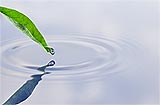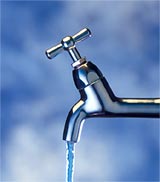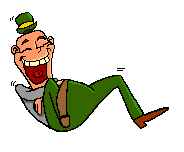
 |
Be WaterSmart
- Take a look at the water cycle and how groundwater is used in the RDN. We can only use what we have and we can't make 'new' water.
- Using less water means there is less pollution (such as greenhouse gases).
- Your family will spend less money on their water and energy bills.
It's simple. Turning off taps and reusing towels will save a lot of water. More ideas for the bathroom, laundry and kitchen are listed below.
| The Bathroom... Toilet talk and more... |
- Turn off the taps!
Don't let the water run when you're brushing your teeth and hair.
- Don't use the toilet as the garbage can.
Each year, toilets use more water than anything else in the house. So don't use it if you can use a garbage can.
- Take 5 minute showers.
Short showers use far less water than a bath.
|
Knock Knock
Who's There?
Urall
Urall who?
Urall washed up kiddo!

|
Less Laundry = Less Water.
To stop water waste, we all need to cut down on laundry. It is possible to have clean clothes and save water.
- Don't throw your clothes into the laundry hamper unless they need to be cleaned.
- Change into work or play clothes after school so that your school clothes can be worn more than once.
- Reuse towels after your shower or bath. You are clean after all!
- Don't forget to turn off the taps!
Sometimes after we've been playing outdoors with hoses we forget to turn them off. This can waste a lot of water and is unnecessary.
- US Environmental Protection Agency. Water For Kids. This site has educational materials, games and more.
- The U.S. Geological Survey (USGS) has excellent information on the watercycle.
- The American Ground Water Trust (AGWT) - AGWT promotes efficient and effective groundwater management. AGWT has recently published a children's book called Well….what's all that drilling about? about two children watching the drilling of a home's water well and the installation of a water pump. The book is currently online at www.agwt.org.
- American Ground Water Trust. Well... what's all that drilling about? American Ground Water Trust. Concord, New Hampshire, USA. 2007. pp 16.
|



